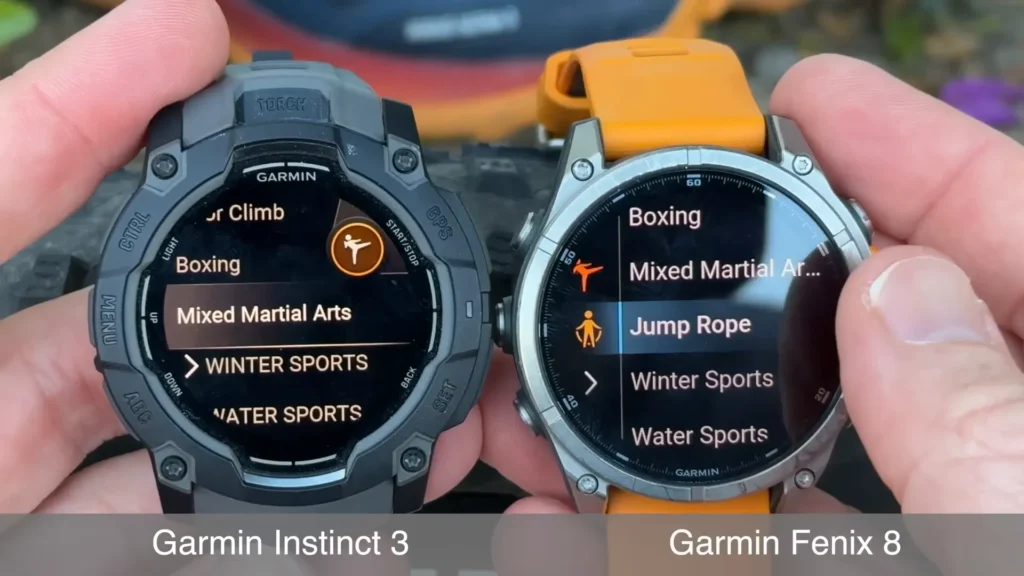Proper running form means running efficiently and safely! It’s about maintaining an upright posture, leaning slightly forward from your ankle joint, and ensuring your foot strike lands mid-foot.
Aim for a cadence of 170-190 steps per minute, swinging your arms comfortably at a 90-degree angle. Getting this correct running form down can seriously cut the risk of injury and make you a more enjoyable, healthier runner.
🔑 Key Takeaways
- Posture First: A straight line from ear to ankle and a slight forward lean from the ankles reduces injury risk by 23%.
- Cadence is Key: Target 170–190 steps per minute (SPM) to prevent overstriding and lower impact forces.
- Mid-Foot Strike: Landing with your foot under your hip distributes impact evenly, unlike a heel strike which increases tibial stress by 40%.
- Strength is Non-Negotiable: A strong core and glutes are your foundation for stability and power. Weak hips are a leading cause of runner’s knee.
- Fix One Thing at a Time: Use video analysis to spot errors like overstriding or slouching, then correct them with targeted drills.
Mastering Running Form: The 2026 Blueprint for Speed and Injury Prevention

To run with proper form, you need to align your posture, optimize your cadence, and land with a mid-foot strike. This guide breaks down the biomechanics—from arm swing to foot strike—into actionable steps. Implementing these techniques cuts injury risk and boosts running economy, making every mile easier whether you’re on road or trail.
It boosts your performance, helps with injury prevention, and makes running more enjoyable. This guide equips recreational runners and distance runners with the knowledge and practical running technique tips they need to excel.
Building Your Foundation: Posture and Body Alignment
Achieving proper running form starts with upright posture and optimal body alignment. Think of it as building a house – you need a solid foundation.
- Head: Imagine a string gently lifting you from the crown of your head. This promotes good head posture. Keep your gaze 20-30 meters ahead, not down at your feet.
- Shoulders: Keep them loose and level, allowing for a natural arm swing. Avoid hunching or tensing your upper body.
- Core: Your core muscles are your secret weapon. Engage your abdominal muscles to stabilize your torso. This prevents excessive lateral movement and helps maintain body balance.
- Hips: Aim for a neutral position in your pelvis. Avoid anterior pelvic tilt, which can lead to lower back pain.
- Ankles: Initiate a slight forward lean from your ankles, not your hips. This engages your glutes and promotes forward momentum.
Visual Aid: Imagine a side view of a runner with a straight line extending from their ear, shoulder, hip, to ankle. An arrow illustrates that gentle lean initiating from the ankles.
Powering Your Run: Arm Swing and Cadence

Your arms and legs work in harmony. Optimizing your arm swing and running cadence improves efficiency and saves valuable energy.
- Arm Swing: Bend your arms at a 90-degree angle. Swing them forward and back (not across your body) and keep your hands relaxed. This promotes momentum and body control.
- Visual Aid: An animation shows the ideal arm swing motion. Note the 90-degree angle and the hands relaxed.
- Cadence: Your step rate, or strides per minute, is crucial. Aim for 170-190 steps per minute. A higher cadence reduces overstriding and softens impact.
- Use a metronome app or music playlists at 170-190 BPM to train rhythm.
- A higher cadence forces runners to take quicker strides, which reduces the loading rate during initial contact with the ground.
Making Contact: Foot Strikes and Ground Contact Time
How your foot lands is critical for shock absorption and minimizing the risk of injury.
- Foot Strike: Aim for a mid-foot strike, where your foot lands directly beneath your hips. This distributes impact evenly.
- Heel Strike: Landing on your heel sends a shock up your leg. This increases the risk for injury and is linked to shin splints.
- Forefoot Strike: Some elite runners like those using the Pose Method favor this, but it demands strong calf muscles and can stress the Achilles tendon.
- Visual Aid: Diagrams of heel strike, mid-foot strike, and forefoot strike highlight impact differences.
- Ground Contact Time: Minimize how long your foot stays on the ground. Quick feet generate more power.
- Running Drills like high knees or butt kicks will decrease ground contact time.
Spotting and Correcting Common Mistakes

Knowing common mistakes in running form is key to correction.
- Overstriding: Landing with your heel ahead of your hips wastes energy and stresses joints.
- Correction: Focus on landing under your hips and increasing your cadence.
- Slouching: Poor running form restricts breathing and reduces efficiency.
- Correction: Engage your core muscles. Remember upright posture.
- Exaggerated Arm Swing: Swinging arms across your body wastes energy.
- Correction: Keep arms bent at a 90-degree angle, swinging forward and back.
- Bouncing: Vertical oscillation wastes energy.
- Correction: Run with a low center of gravity. Focus on smooth, forward motion.
- Looking Down: Strains your neck and disrupts balance.
- Correction: Keep your head posture up and look forward.
Lower Body Alignment: From Hip to Ankle
Optimal alignment reduces stress on joints and muscles.
| Body Part | Ideal Position | Common Error |
|---|---|---|
| Hips | Neutral tilt | Anterior pelvic tilt |
| Knees | Slight flexion | Overextension |
| Ankles | Dorsiflexed | Excessive pronation 413 |
Cadence Matters: Aim for 170–190 steps per minute (SPM). A higher stride rate decreases ground contact time, lowering impact forces.
Strength Training: Your Secret Weapon

Core strength and balanced muscles are essential for correct running form. Make strength training a regular part of your routine.
- Core Exercises: Planks, dead bugs, and glute bridges strengthen your core muscles, promoting stability.
- Visual Aid: Illustrations of core exercises.
- Lower Body Exercises: Squats, lunges, and single-leg calf raises build leg and glute strength for better power.
- Hip Flexor Exercises: Stretching and strengthening your hip flexors avoids tightness and increases range of motion.
- Posterior Chain Exercises: Strengthen the posterior chain with exercises like Romanian deadlifts to improve speed.
The Vital Role of Breathing
Correct breathing technique is vital for efficiency. Improved breathing techniques lead to more efficient movement.
Optimize oxygen intake with diaphragmatic breathing or a 3:2 rhythm (inhale for three steps, exhale for two).
Individual Considerations
While these principles are guidelines, your body type, experience, and any previous injuries may require adjustments.
- Seek Professional Guidance: A running coach or physical therapist can provide a gait analysis for personalized feedback.
- Listen to Your Body: Pay attention to pain and adjust. Never force a position.
- Gradual Progression: Make changes slowly to avoid overload. Follow the 10% rule for mileage increases.
Fixing Common Form Errors
| Problem | Solution | Drill |
|---|---|---|
| Overstriding | Shorten stride | Run with quicker, lighter steps |
| Hunched Shoulders | Shoulder rolls every mile | “Scarecrow” arm swings |
| Heel Striking | Increase cadence | Treadmill barefoot drills |
Expert Insight: “Imagine running on hot coals – fast, light steps prevent sinking” – Coach Amanda, USATF Certified
Practical Application
Time to put this knowledge to work.
- Record Yourself: Use your smartphone to film your running form from the side and front. Analyze for overstriding or slouching.
- Focus on One Element: Work on just cadence or just arm swing for a week before adding another.
- Drills: Use running drills like A-skips or bounding to improve coordination. Do them after a warm-up.
- Mileage: Increase weekly mileage by no more than 10% to reduce injury risk.
- Consistency: Practice consistently to develop proper running technique as muscle memory.
❓ Frequently Asked Questions
How long does it take to improve running form?
Expect 6–8 weeks of consistent drills and strength training. Start with 10-minute form-focused sessions during easy runs. Changes must be gradual to avoid new injuries.
Can heel striking cause shin splints?
Yes. Heel strikers face 40% higher tibial stress, a primary cause of shin splints. Transition to a mid-foot strike gradually over several weeks to adapt muscles and tendons.
Do I need a physical therapist for gait analysis?
Highly recommended for personalized adjustments, especially if recovering from injury. Many specialty running stores also offer basic gait analysis when fitting shoes.
Should I change my natural running style?
Make gradual, evidence-based adjustments. Sudden changes increase injury risk. Film your form monthly to track progress. Your natural biomechanics have limits you can optimize.
Do shoes affect running form?
Absolutely. High-cushion shoes can encourage heel striking. Get fitted at a specialty store. Rotate 2-3 different pairs (e.g., a neutral and a stability model) to strengthen foot muscles.
Conclusion
Mastering proper running form is a systematic process. Start with posture and cadence. Integrate strength training for core and glutes. Use video analysis to identify your specific errors.
The result is a dramatic reduction in injury risk, improved running economy, and faster times. You become a stronger, more resilient runner.
Your next step is action. Film your next run. Pick one element from this guide to focus on. Consistency turns technique into habit.
References
- Effects of Foot Strike Pattern on Running Injuries – Journal of Sports Sciences
- Cadence and Impact Loading – Journal of Strength and Conditioning Research
- The Biomechanics of Foot Strike – Runner’s World
- Running Biomechanics Overview – Physiopedia
- Running Economy and Efficiency – Science for Sport
- The Essential Guide to Running Form – ASICS
- What is Running Cadence and Why It Matters – Nike
